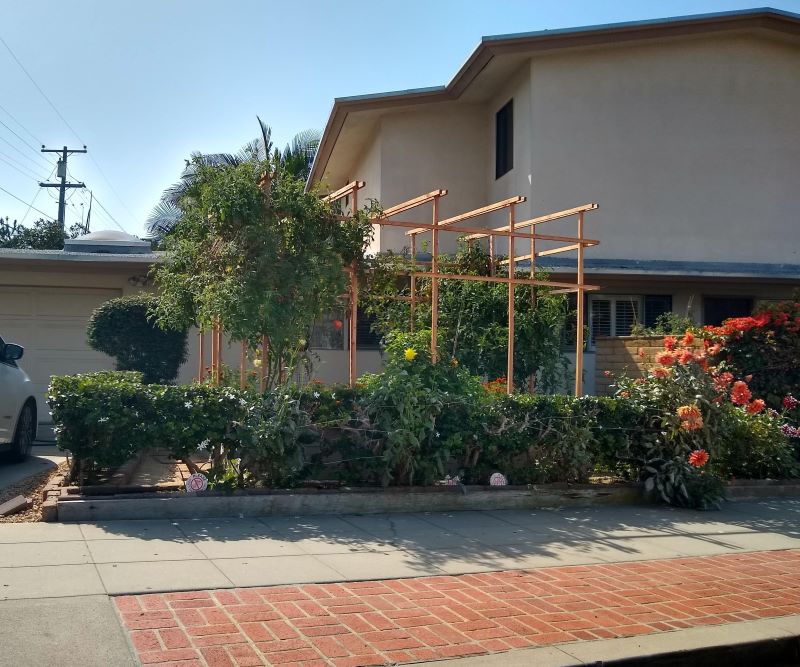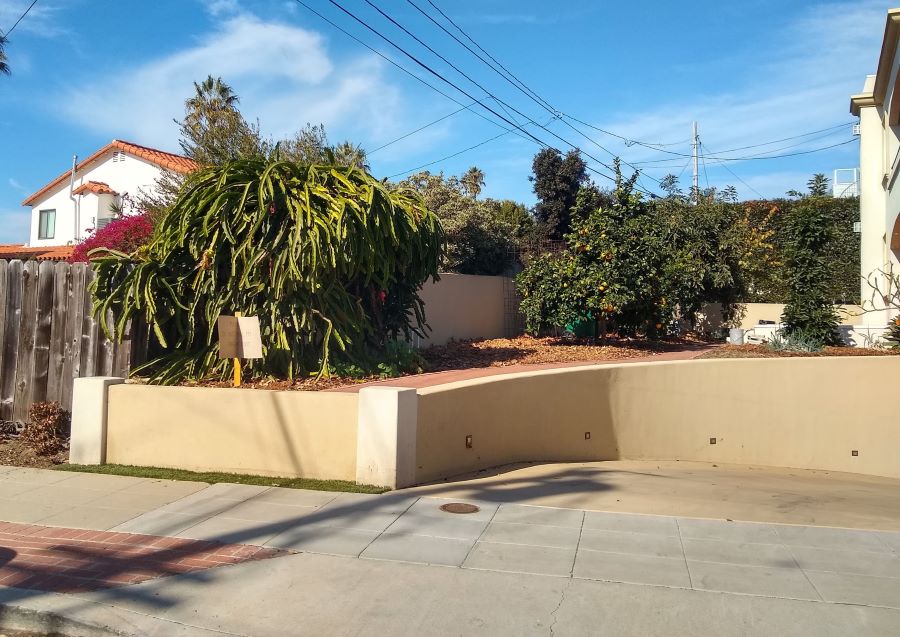You might be planning a food garden for the first time, or you might be wondering if your vegetables and fruit trees are planted in the best places. Either way, this post is for you.
I have built food gardens in a couple different yards for myself and my family, and I have visited and taken note of the layout of many more. I’ve made lots of mistakes, I’ve watched others make mistakes, and I’ve watched others get it right.
Here I boil down what I’ve learned to the four most important points. Keep these in mind when thinking about where to plant what, in order to get the most productive Southern California food garden.
These are listed in order of importance:
1-Seek the sun
By far, the health and fruitfulness of a vegetable plant or fruit tree is most determined by whether it’s getting enough sunlight, and usually that means whether it’s getting sunlight all day with no shade whatsoever. Therefore, when deciding where to plant, your priority must be to seek the sun.
This is especially important in the winter for vegetables. Do not site your vegetables just north of a tall wall or large tree unless you only want to grow in the summer.
If the sunniest location is the front yard, plant there.


I once lived in a house in a canyon near the San Diego Zoo that was so shaded by large trees that I grew many of my vegetables in pots on my roof one year because that’s where the most sun was. (The plants grew well, but man, that was a lot of work!)
2-Close to the house
Why are we inclined to plant our home orchard “over there”? If we have a yard with a back corner, the fruit trees go there. Why? It is not good for the trees or for our use of them.
For our sake and for the sake of our vegetables and fruit trees, the closer to the house we can plant them, the better. Again, if this means planting the front yard, then plant the front yard. (Presuming it’s also very sunny there.)
When vegetables and fruit trees are grown close to the house, they are better cared for. It’s more convenient to visit and water and observe plants close to the house so it happens more often. Even though my vegetable beds are all near my house, my experience is that the beds closest to the house get more attention and usually look better. I eat from them more often, too, so I especially try to grow herbs and garnishes there (cilantro, rosemary, green onion, etc.).


3-Up hill, Down hill, North side, South side
If the yard has a slope, then the bottom of the slope is likely colder on winter nights. You can make use of that. Plant trees like apples or apricots or peaches down there because they perform better when getting lots of chilly nights during our Southern California falls and winters.
Conversely, plant trees like mangos, papayas, bananas, and avocados up hill because they do not like cold nights.
Similarly, a wall that runs east-west can be used to raise or lower temperatures in fall and winter. On the wall’s south side, it will be sunny and warm. I have used a south wall to keep bananas happier during winter. I have seen others use south walls to keep papayas happier during winter. On the wall’s north side, it will be shady and cold. I have used a north wall to give a cherry tree more chill in winter.
Curiously, however, north sides of houses can be planted to tall tropicals that are able to reach over the top of the roof in order to bathe in the sun and warmth there during winter.


(Check out this related post: “Four areas of a yard that are warmer in winter.”)
4-Cluster tree species
If you are planting more than one plum or apple or blueberry or avocado, plant them together. That is, plant all of your plums together and plant all of your avocados together. Cluster them.
The benefits of doing so are more fruit because of cross pollination and easier irrigation management.
I made the mistake of planting one of my avocado trees in my current yard away from the others. It was my Pinkerton that was alone and never made much fruit until I planted an Edranol near it. Many kinds of fruit trees beyond avocados will make more fruit when near other trees of their own kind.
Clustering species also makes watering easier, as each type of tree has slightly different water needs. For example, deciduous trees like peaches need no irrigation in winter whereas citrus trees sometimes do. If your citrus are in a group, you can continue watering them even as you cut off the water to your peach.

There are lots of other factors to consider when arranging the planting of a food garden. Will you use rainwater or graywater? Then try to plant downhill from your house. Are there large shade trees around? Avoid planting near them, let alone under them, for they will shade and steal water from your plants. But the above four principles are the most important, and if they’re satisfied, then fruitfulness is likely.
And the reality is that a food garden is never finished being planted. I’ve been at my place for almost a dozen years now and I’m still rearranging, improving the locations of my plantings based on what I’ve observed about the performance of different plants. At the moment, I’m planting new bananas, litchis, mangos, and avocados higher on my slope, where it is not as cold on winter nights.
What plants do you have that might benefit from a newer, better location or arrangement?
Thank your for supporting my Yard Posts and keeping the ads away.
All Yard Posts are listed HERE




Just planted a Lamb avocado near a white, south facing wall. It replaces a tree planted in the spring that got cooked during a hot spell that summer. Waited until fall to plant this time but still could get hot next summer so am prepared to shade and mist it. Could be a mistake, though!
I put my Pinkerton next to the chicken coop along side a Stewart. The Stewart doesn’t do much but the Pinkerton is out of control with all the fruit. I’m pretty convinced it’s from all the flies pollinating it. I’ve also purposely planted stuff in the shade to control growth (white sapote and ice cream bean). As for stuff to move, I’ve got a lemon that’s being shaded and crowded out by bananas and sugar cane, also my moringa is too shaded and needs to move. You’ve seen it over here, lots of plants.
Brilliant info, but my tiny food forest is mainly shaded and as narrow as a snake. As a result, I struggle to get flowers and fruits. I let them all go vertically and duke it out for a ray. So much for my self-reliant food survival post-apocarpous!